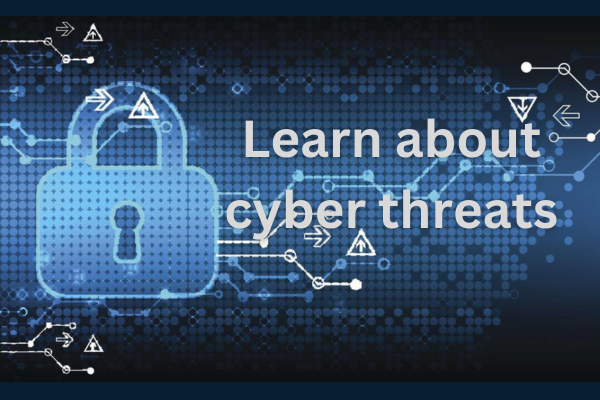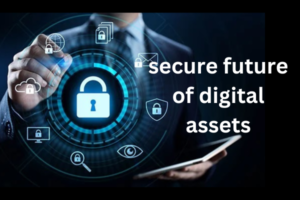
In today’s digital age as our lives are more interconnected than ever before. We rely on the Internet for everything from banking and shopping to communicating and working. While this connectivity offers unparalleled convenience, it also exposes us to a myriad of cyber threats. Protecting your digital assets is crucial in safeguarding your personal and professional information. As the value and prevalence of digital assets grow, so do the tactics and sophistication of cyber threats. This blog delves into the critical importance of securing digital assets, highlights common cyber threats and provides actionable strategies for safeguarding your digital wealth.
First we will discuss about digital assets:
The Growing Value of Digital Assets
Digital assets encompass a wide range of items that exist in digital form and can hold significant value. These include:
- Cryptocurrencies: Digital currencies like Bitcoin, Ethereum, and others that operate on decentralized networks.
- Non-Fungible Tokens (NFTs): Unique digital tokens representing ownership of digital art, collectibles, and other assets.
- Sensitive Financial Information: Personal and business financial data stored in digital formats.
As the value of these assets increases, they become attractive targets for cybercriminals. Securing them is not just a matter of protecting financial wealth but also preserving privacy and maintaining trust in digital systems.
Common Cyber Threats to Digital Assets
Understanding the types of cyber threats is the first step in protecting your digital assets. Here are some common types:
1. Phishing Attacks
Phishing involves tricking individuals into providing sensitive information such as passwords or private keys by masquerading as a legitimate entity.Fraudulent attempts to obtain sensitive information by pretending to be a trustworthy entity via email, social media, or other online communication.
2. Malware and Ransomware
Malware is malicious software designed to damage or gain unauthorized access to systems, while ransomware encrypts files and demands payment for their release. Ransomware can lock you out of your digital wallet or personal files, demanding a ransom in cryptocurrency to regain access.
3. Hacking and Unauthorized Access
Hackers may exploit vulnerabilities in software or systems to gain unauthorized access to digital assets. A hacker might exploit a vulnerability in a cryptocurrency exchange’s security to steal user funds.
4. Social Engineering
Social engineering involves manipulating individuals into divulging confidential information or performing actions that compromise security. An attacker might impersonate a tech support agent and convince you to share your private key or seed phrase.

Best Practices for Securing Your Digital Assets
Implementing robust security measures is essential for protecting your digital assets. Here are some best practices:
Use A Strong and Unique Password
Create complex passwords that are difficult to guess and avoid using the same password across multiple platforms. A strong password is your first line of defence. Avoid common passwords like “123456” or “password”. Instead, use a combination of letters (both uppercase and lowercase), numbers, and special characters.
Tip: Use a password manager to generate and store strong, unique passwords for each of your accounts.
Enable Two-Factor Authentication (2FA)
Two-factor authentication adds an extra layer of security by requiring a second form of verification in addition to your password.
Tip: Use authentication apps like Google Authenticator or hardware tokens rather than SMS-based 2FA, which can be vulnerable to SIM-swapping attacks.
Secure Your Private Keys and Seed Phrases
Private keys and seed phrases are crucial for accessing your digital assets. Keep them secure and never share them with anyone.
Tip: Store private keys and seed phrases offline in a safe place, such as a hardware wallet or a secure physical location.
Regularly Update Software and Firmware
By Keeping your software and hardware updated ensures you have the latest security patches and protections against vulnerabilities.
Tip: Set your devices to update automatically to ensure you never miss an important security patch.
Be aware of Phishing Scams
Always verify the authenticity of emails, messages, and websites before entering sensitive information.
Tip: Check URLs carefully for misspellings or unusual domain names and use official communication channels for sensitive transactions.
Use Antivirus and Anti-Malware Software
Install reliable antivirus and anti-malware software to detect and remove threats. Keep this software updated to protect against the latest threats.
Tip: Norton, McAfee, and Bitdefender are popular choices for comprehensive protection.
Use Reputable Exchanges and Platforms
Choose well-established and reputable exchanges and platforms with strong security measures.
Tip: Research the security history and practices of platforms before using them and avoid using lesser-known or unverified services.
Be Cautious with Email and Links
Phishing attacks are common, and they often come through email. Be wary of emails from unknown senders and avoid clicking on suspicious links or downloading attachments.
Tip: If you receive an unexpected email from your bank, call them directly using a known number instead of clicking on links in the email.
Backup Your Data Regularly
Regular backups ensure that you can recover your data in the event of a ransomware attack or other data loss incidents. Use both cloud storage and physical backups for redundancy.
Tip: Schedule automatic backups to an external hard drive and a cloud service like Google Drive or Dropbox.
Monitor Your Accounts and Transactions
Regularly review your account activity and transaction history to detect any unusual or unauthorized actions.
Tip: Set up alerts for transactions and account changes to stay informed of any suspicious activity.

The Future of Digital Asset Security
As digital asset markets and technologies continue to evolve, so will the strategies and tools for securing them:
1. Advances in Security Technology
- Biometric Authentication: Enhanced biometric authentication methods, such as facial recognition and fingerprint scanning, will provide additional layers of security.
- Decentralized Security Solutions: Innovations in decentralized security solutions, such as multi-signature wallets and decentralized identity systems, will enhance protection.
2. Evolving Threat Landscape
- Advanced Threats: Cyber threats will continue to evolve, necessitating ongoing vigilance and adaptation of security practices.
- Collaboration and Awareness: Increased collaboration between security experts, organizations, and users will be crucial in addressing emerging threats and enhancing overall security.
Securing digital assets is essential in today’s digital age, where cyber threats are increasingly sophisticated and prevalent. By implementing robust security practices, staying informed about potential threats, and having a response plan in place, you can protect your digital assets and maintain their integrity.
Protecting your digital assets is not a one-time task but an ongoing process. By implementing these essential cybersecurity practices, you can significantly reduce your risk of falling victim to cyber threats. Stay vigilant, stay informed, and prioritize your digital security.
